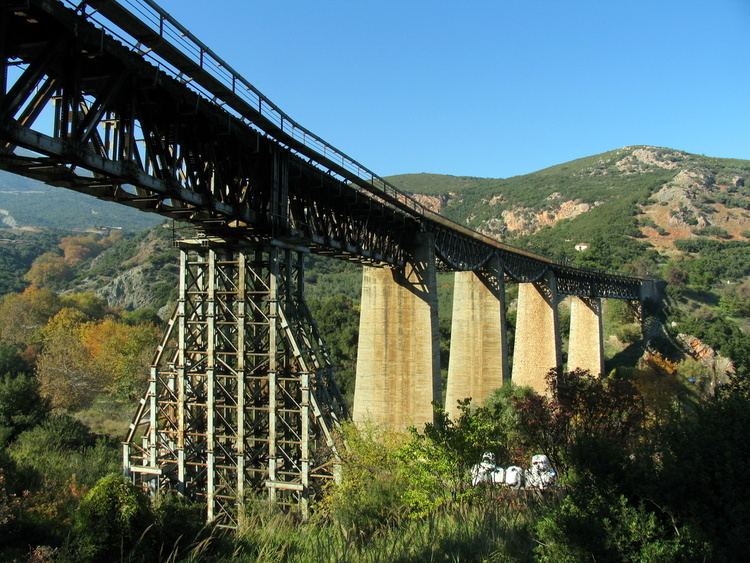Native name Γοργοπόταμος Source Mount Oeta | Length 15 km | |
 | ||
River mouth Spercheios10 m (33 ft) | ||
The Gorgopotamos (Greek: Γοργοπόταμος, "the rushing river") is a river in the southern part of Phthiotis, Central Greece, Greece not far from the border with Phocis. The river is host to the Ellinopygosteos fish (Pungitius hellenicus).
Contents
Geography
The Gorgopotamos rises 4 km north of Pavliani and west of Koumaritsi in the Oiti mountains with two streams. The river flows through a steep forested valley. It passes under OSE's Athens-Thessaloniki railway line and through the village Gorgopotamos, where it enters the plains. It empties into the river Spercheios near Ydromilos, 5 km southwest of Lamia.
History
The railway bridge over the river is famous for one of the biggest sabotage acts of World War II, "Operation Harling". Operation Harling was a British mission and 150 Greek partisans blew it up on 25 November 1942, cutting off German supplies being transported between Athens and Thessaloniki (mostly headed for Africa). The blast destroyed two of the six piers of the bridge. The IV Railroad Engineer Corps Battalion of the Italian Army repaired the bridge in 19 days, replacing the destroyed piers with the still existing steel girders. The area around the bridge is a monument. The Engineer who designed and built the original bridge was an Italian immigrant and Gorgopotamos local by the name of Agostino Tacconi, who used clever engineering at the time utilising unique parts making the bridge difficult to reconstruct in a timely manner. The British forces found this to be ideal as he Germans could not reconstruct it.
